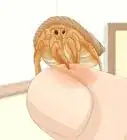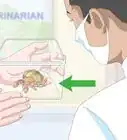This article was co-authored by Pippa Elliott, MRCVS. Dr. Elliott, BVMS, MRCVS is a veterinarian with over 30 years of experience in veterinary surgery and companion animal practice. She graduated from the University of Glasgow in 1987 with a degree in veterinary medicine and surgery. She has worked at the same animal clinic in her hometown for over 20 years.
There are 9 references cited in this article, which can be found at the bottom of the page.
This article has been viewed 44,231 times.
Purple Thai devil crabs are an uncommon species of crabs that people are increasingly popular pets. These small and fascinating scavengers are native to Southeast Asia, especially the forests and rivers of Thailand. Purple Thai devil crabs can grow up to 4 inches and are a freshwater species, much like their cousins the fiddler crab and Thai devil crab.[1] Purple Thais are hearty crabs that are not only easy to care for and can provide you enjoyment for 5-15 years. You can care for your purple Thai devil crabs by creating a healthy habitat for them and tending to their needs every day.
Steps
Creating a Healthy Habitat
-
1Get an aquarium tank. Purple Thai devil crabs live near rivers in the wild. To keep your crabs happy and healthy, keep their tank as close to the natural habitat as possible. Purchase an aquarium tank of at least 5 gallons to accommodate your crabs.[2]
- Find a tank that will fit with the number of purple Thais you have. If you have one to three crabs, a 5-gallon tank will work. If you have multiple purple Thais, consider a tank that is at least 10 gallons. Increase tank size by 5 gallons for every 5-6 crabs you have. This can help your purple Thais stay healthy as well as prevent overcrowding.
- Buy the biggest tank you can afford. A good rule of thumb is no more than one crab per square foot. If you are trying to save some money, consider getting your tank second hand. Make sure to wash any tanks before use.
- Purchase a tank screen to keep your purple Thais from climbing out and escaping.[3]
-
2Set the aquarium in a warm place. Purple Thais live in a naturally warm environment. They’ll thrive in water that is between 72–82 °F (22.2–27.8 °C), which you can promote by putting their tanks in a warm spot.[4] Keep the aquarium out of the direct sunlight, which can kill purple Thais.[5]
- Pick a places that has a consistent temperature of 72 to 82 degrees Fahrenheit (21 to 27 Celsius). Put a thermometer on the tank to help you measure the temperature.[6]
- Avoid exposing the tank to heating devices or areas of your home with a draft.
Advertisement -
3Fill the aquarium. Purple Thai devil crabs live on both the land and in water. Fill the aquarium with a thin layer of sand and some water as the base for the habitat. Purple Thais like fresh water that is naturally brackish. Place a small bowl of water in the tank or pour it in directly.[7]
- Spread 4-5 centimeters of aquarium, play, or bio sand to the bottom of the tank. Use more sand if you have multiple purple Thais or want your crabs to have more burrowing space.[8] You can also use coconut fiber substrate if you prefer.[9]
- Pour 1.5-2 liters of brackish water into the aquarium. You can buy a commercial freshwater salt mixture at most pet stores.[10] Mix brackish water by stirring together 1.5-2 liters of dechlorinated water and 1 gram (0.035 oz) or ½ teaspoon marine salts.[11] It’s important to use dechlorinated water—chlorine can stress and kill your purple Thais.
- Understand that it’s normal for the water and sand mixture to appear brown and cloudy. The color and cloudiness will go away in a few hours.
-
4Decorate the habitat. After you’ve added sand and water, it’s time to make the tank feel like home to your purple Thais. These crabs like to climb and sit on things near the water. Add decorations such as rocks, sticks, and Java moss to keep your purple Thais happy and healthy.
- Choose a variety of fresh or plastic plants, pieces of wood or sticks, and rocks that your crabs can sit on and climb. Even a small piece of PVC piping is a great feature for the habitat. Rinse out the piping before putting it in the tank. Cover it with some Java moss, through which purple Thai devil crabs love to graze and catch food.
Tending to Your Crabs
-
1Introduce your purple Thais into the tank. Once you’ve set up your tank, welcome your crabs into their new home. Release your purple Thais into the same tank, but watch for aggressive behaviors from other animals in the tank that may indicate inability to live together.[12]
- Be aware that some fish such as cichlids may eat or harass your purple Thais. Your crabs may also harass or eat small fish, dwarf African frogs, and tank mates that reside or sleep at the bottom of the tank.
- Recognize that the best tank mates for purple Thais may be other purple Thai devil crabs. Some other mates that may work with purple Thais are zebra danios, tetras, barbs, platies, and mollies.
-
2Feed your crabs. Purple Thai devil crabs eat by “grazing” throughout the day. They usually graze Java moss and the bottom of the tank for their food. Purple Thais are omnivores that eat everything from vegetables to other animals. Pay attention to how much your pet eats and give them more food as necessary. Avoid overfeeding purple Thais because this can make the tank smell, decrease water quality, and hurt your crabs.[13]
- Vary your purple Thais’ diet. They eat both meat and plants. You can give your crabs meats such as fruit flies, tiny crickets, and blood worms.e They will also eat brine shrimp. Give your crabs plants such as dried algae and fresh or dried vegetables that you cut into smaller pieces about the size of your individual crabs.
- Consider giving your purple Thais protein- or algae-based pellets in addition to any plants or meats.[14]
- Remove any food after three days in the tank. It’s not uncommon for crabs to eat rotting food, either.
-
3Maintain water quality. Purple Thais thrive in clean, fresh, and dechlorinated brackish water.[15] Check the water quality daily and change the tank water every 2-4 weeks.[16]
- Remove 10-25% of the total water volume in the tank every 2-4 weeks. Then refill the tank with the same amount of fresh water that is dechlorinated and slightly brackish.[17]
- Change the tank water more often if necessary. If you detect offensive odors or ammonia, it may mean the water quality is poor. Lethargic purple Thais or crabs with dull color may also indicate poor water quality. In any of these cases, change the water as soon as possible.[18]
Monitoring Your Purple Thai’s Health
-
1Observe for signs of good health. Purple Thai devil crabs are generally robust and healthy. When you feed or check the tank, also pay attention to your crab’s appearance, which can indicate health and vitality. Healthy purple Thai devil crabs:
- Scavenge their habitat actively
- Appear healthy
- Have bright, even coloring[19]
-
2Identify signs of illness. It’s rare for purple Thai crabs to have diseases or illness. They can get sick and die from improper temperatures, dirty water, or diseases introduced by other species. Some potential signs of illness in a purple Thai devil crabs are:
-
3Recognize molting. Crabs shed, or molt, their skin as a part of the growing process. The signs of molting may seem like your crab is ill. There are some additional symptoms that can help you better identify if your crab is ill or molting. Look for several of the following signs, which is a good indicator that your crab is molting:[22]
- Digging
- Drinking large amounts of water or soaking in the dish
- Spilling water from the dish to dampen the sand or coconut fiber in the tank
- Cloudy eyes
- Ashy-looking skin, which is also called the exoskeleton
- Lethargy
-
4Let molting crabs to rest. If your purple Thai devil crab is molting, leave it alone until it exhibits a healthy appearance and behavior. Molting crabs can be very fragile for several days during and after the shedding their skin.
- Understand that your crabs may be reclusive and not eat during molting.
- Avoid touching your crab or removing its skin. Leave the molted skin in the tank because crabs often eat it for calcium.[23]
Warnings
- Use caution when handling your purple Thai devil crab so that you don’t hurt it or your pet doesn’t nip you.⧼thumbs_response⧽
References
- ↑ http://www.petco.com/content/petco/PetcoStore/en_US/pet-services/resource-center/caresheets/freshwater-crab.html
- ↑ http://www.petco.com/content/petco/PetcoStore/en_US/pet-services/resource-center/caresheets/freshwater-crab.html
- ↑ http://www.petco.com/content/petco/PetcoStore/en_US/pet-services/resource-center/caresheets/freshwater-crab.html
- ↑ http://www.petco.com/content/petco/PetcoStore/en_US/pet-services/resource-center/caresheets/freshwater-crab.html
- ↑ http://www.carolina.com/pdf/care-sheets/Fiddler-Crab-CareSheet.pdf
- ↑ http://www.petco.com/content/petco/PetcoStore/en_US/pet-services/resource-center/caresheets/freshwater-crab.html
- ↑ http://www.petco.com/content/petco/PetcoStore/en_US/pet-services/resource-center/caresheets/freshwater-crab.html
- ↑ http://www.carolina.com/pdf/care-sheets/Fiddler-Crab-CareSheet.pdf
- ↑ http://www.hermitcrabpatch.com/Hermit-Crab-Key-To-Survival-Deep-Moist-Substrate-a/133.htm
- ↑ http://www.petco.com/content/petco/PetcoStore/en_US/pet-services/resource-center/caresheets/freshwater-crab.html
- ↑ http://www.carolina.com/pdf/care-sheets/Fiddler-Crab-CareSheet.pdf
- ↑ http://www.petco.com/content/petco/PetcoStore/en_US/pet-services/resource-center/caresheets/freshwater-crab.html
- ↑ http://www.petco.com/content/petco/PetcoStore/en_US/pet-services/resource-center/caresheets/freshwater-crab.html
- ↑ http://www.petco.com/content/petco/PetcoStore/en_US/pet-services/resource-center/caresheets/freshwater-crab.html
- ↑ http://www.carolina.com/pdf/care-sheets/Fiddler-Crab-CareSheet.pdf
- ↑ http://www.petco.com/content/petco/PetcoStore/en_US/pet-services/resource-center/caresheets/freshwater-crab.html
- ↑ http://www.carolina.com/pdf/care-sheets/Fiddler-Crab-CareSheet.pdf
- ↑ http://www.petco.com/content/petco/PetcoStore/en_US/pet-services/resource-center/caresheets/freshwater-crab.html
- ↑ http://www.petco.com/content/petco/PetcoStore/en_US/pet-services/resource-center/caresheets/freshwater-crab.html
- ↑ http://www.peta2.com/wp-content/uploads/2015/05/hermit-crab-care-sheet.jpg
- ↑ http://www.hermitcrabassociation.com/pages/moltingordying.html
- ↑ https://hermitcrabassociation.com/phpBB/viewtopic.php?f=51&t=92457
- ↑ http://www.carolina.com/pdf/care-sheets/Fiddler-Crab-CareSheet.pdf
- ↑ http://www.petco.com/content/petco/PetcoStore/en_US/pet-services/resource-center/caresheets/freshwater-crab.html
About This Article
To take care of your purple Thai devil crab, keep it in an aquarium tank that holds at least 5 gallons so your crab has plenty of room to stretch and explore. Line the bottom of the tank with 4-5 centimeters of sand, and fill the tank with water to replicate your crab's natural habitat. Every 2-4 weeks, replace 25 percent of the tank water with fresh, dechlorinated water to keep your crab’s tank clean. In addition to setting up a healthy environment, you should also feed your crab a mix of meat and plants, including fruit flies, blood worms, brine shrimp, dried algae and fresh vegetables to keep it healthy. For more tips from our Veterinary co-author, including how to monitor your purple Thai devil crab’s health, read on!
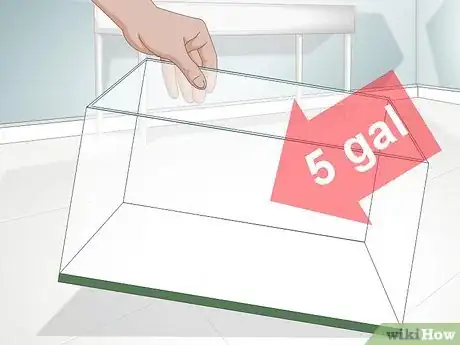
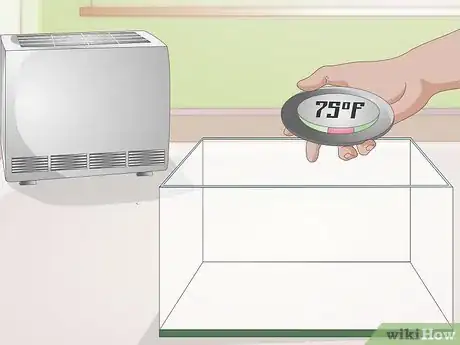
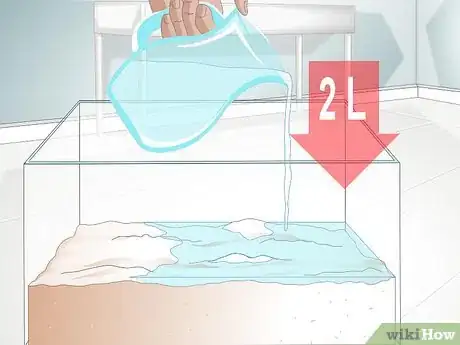
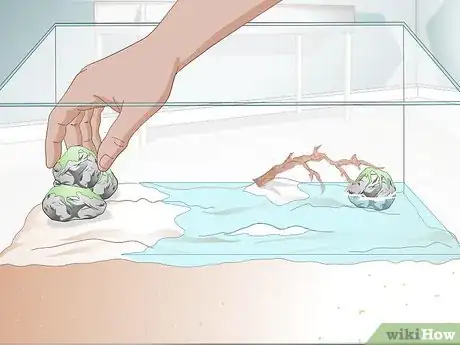
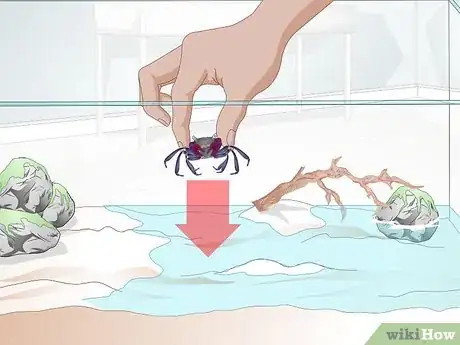
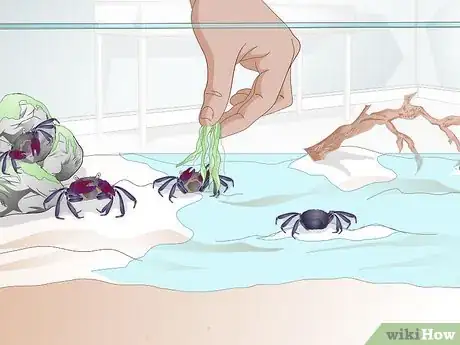
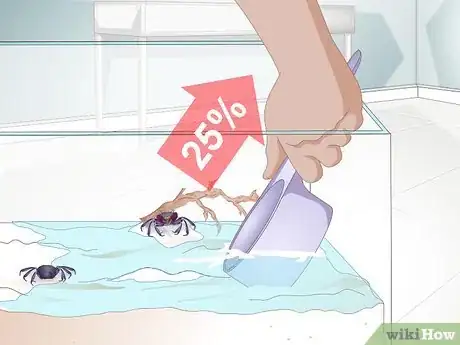
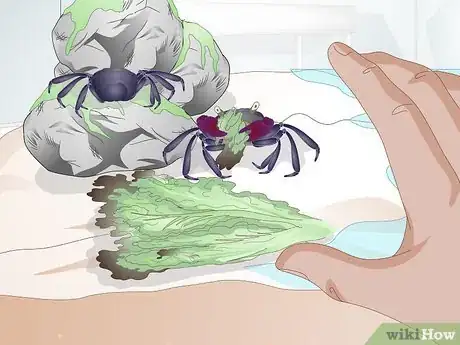
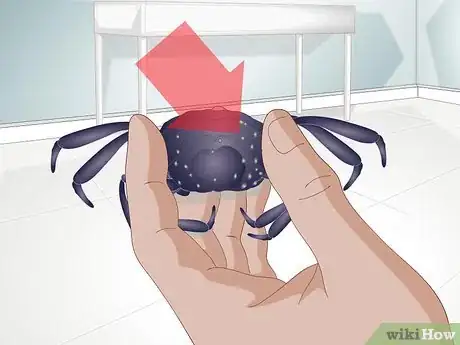
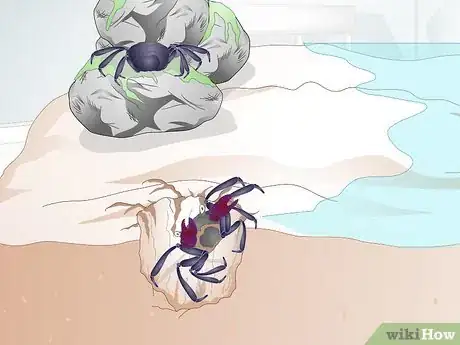
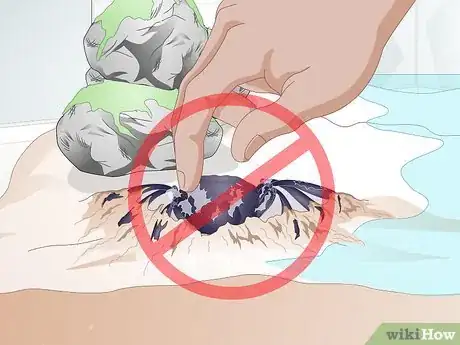
-Step-14.webp)
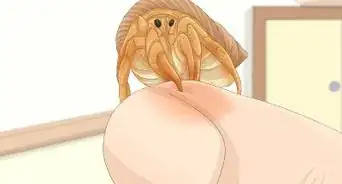
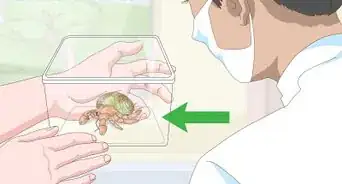
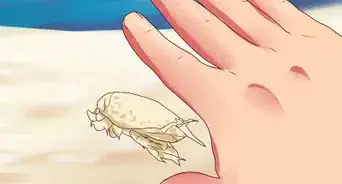
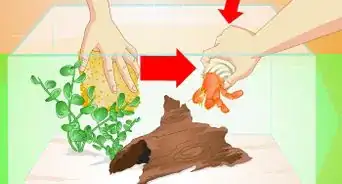

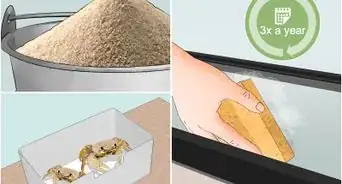


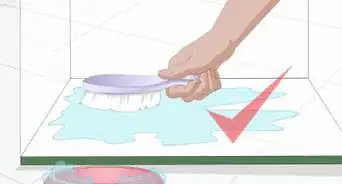
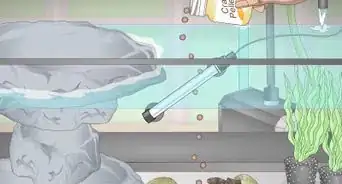
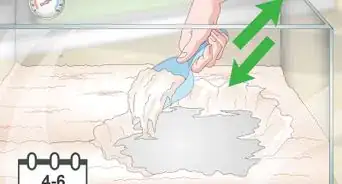
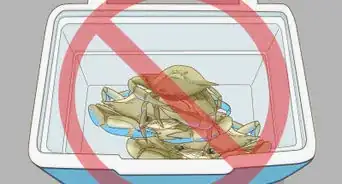
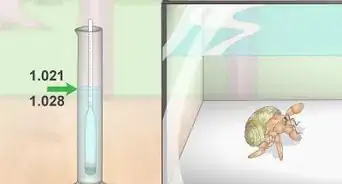







-Step-14.webp)
